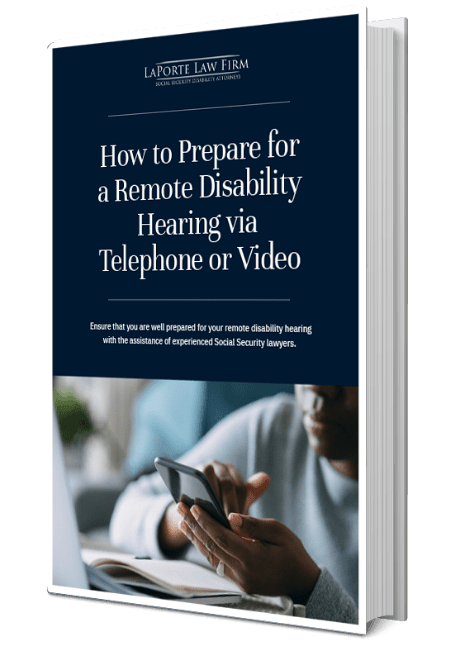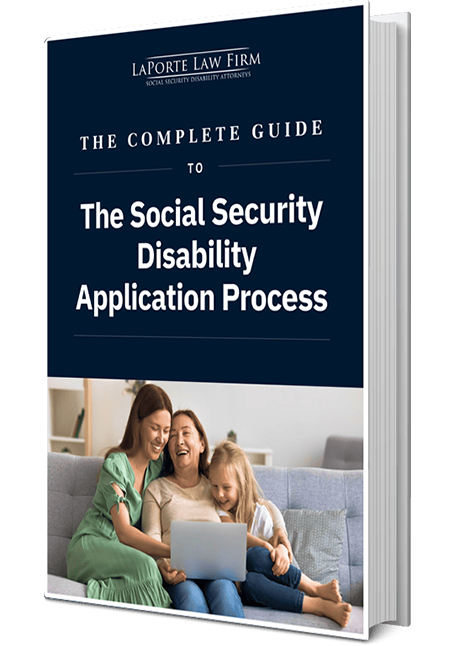
What Is Fibromyalgia?
Fibromyalgia is a medical condition that causes widespread pain and tenderness in the body, along with other symptoms such as fatigue, sleep problems, and difficulties with memory and concentration. It can greatly impact a person’s daily life and ability to work.
What are the symptoms of fibromyalgia?
Fibromyalgia impacts everyone differently, but the common symptoms of fibromyalgia include chronic pain at multiple points throughout the body. People with fibromyalgia describe the pain as aching, burning, or throbbing. Symptoms can also include joint stiffness, numbness and tingling in the upper and lower extremities, problems with concentration, memory, and executive functioning (“fibro fog”), sensitivity to light, sound, smells, and temperature, and gastrointestinal issues.
What are the causes?
Doctors have yet to discover the cause of fibromyalgia. Studies have shown that those suffering from fibromyalgia have heightened sensitivity to pain, and brain MRI studies have shown altered neural pain receptor pathway signals in those with fibromyalgia. There is also evidence to suggest that fibromyalgia is genetic, as the condition tends to run in families. Researchers are still studying the causes of fibromyalgia and assessing whether it may be associated with environmental triggers such as rheumatoid arthritis, depression, or anxiety.
How Does Fibromyalgia Impact One’s Capacity to Work?
Fibromyalgia can greatly impact a person’s ability to work. Suffering from chronic, widespread body pains would reasonably cause anyone to have trouble maintaining a full-time job. The joint pains can limit the ability to perform basic work activities such as the ability to stand, walk, and lift objects. Moreover, the unpredictable nature of symptoms, where one day the pain is manageable while the next day the pain is unbearable, reasonably cause unscheduled absences and work breaks that employers won’t tolerate. A symptom of fibromyalgia called fibro fog can cause deficits in concentration, persistence, and pace that limit the worker’s ability to stay on task, maintain strict deadlines, and focus on complex problem solving.
Those with fibromyalgia also describe “overdoing it,” where in the attempt to push through the pain in order to get through the work day, they end up paying for this overexertion the next day and their symptoms deteriorate. The impact of fibromyalgia on the ability to sleep also causes problems with resting and resetting for the next work day.
Is Fibromyalgia a Disability?
The Social Security Administration’s (SSA) regulations state that fibromyalgia on its own can be a basis for disability approval. Although fibromyalgia does now have an individual SSA Listing, which is the “blue book” list of conditions that meet the strict requirements of SSA rules, Social Security Ruling 12-2p explains how the agency evaluates claims for disability involving fibromyalgia. The SSA recognizes that fibromyalgia is a condition that causes widespread muscle and joint pain, and the ruling explicitly states that fibromyalgia can be a basis for approval for benefits.
In every claim for disability, SSA determines whether there is a medically determinable impairment (MDI). This requires objective medical evidence, signs, or laboratory findings, which can be complicated by the fact that fibromyalgia is not observable on objective studies such as EMG, X-ray, or MRI. However, the regulations state clearly that the SSA must consider whether the fibromyalgia symptoms constitute a medically determinable impairment despite the current lack of objective tests to establish a fibromyalgia diagnosis.
How does the SSA establish that fibromyalgia is an MDI?
Generally, a disability claimant with fibromyalgia must submit evidence from an acceptable medical source — that is, a physician (medical or osteopathic doctor). Chiropractors, therapists, and naturopaths are not acceptable medical sources, but evidence from these sources will still be considered by the SSA.
It’s important to note that the SSA does not rely merely on the diagnosis; the evidence must show that the physician reviewed the medical history and performed a physical examination. The treatment notes must also be consistent with a diagnosis of fibromyalgia. The SSA is more concerned with the record over time, not the single report from a physician that establishes the fibromyalgia. In other words, the SSA reviews the entire longitudinal medical record since the alleged onset date to see if a person’s fibromyalgia gets worse, better, or remains the same over the period of alleged disability. This is due to the SSA rule that a person’s disability must last or be expected to last 12 continuous months. This 12-month rule emphasizes the importance of remaining in ongoing, consistent, treatment with a physician after the initial fibromyalgia diagnosis.
General criteria and specific criteria
SSR 12-2p is a ruling by the SSA that lays out the three specific criteria that a claim involving fibromyalgia must prove.
- First, the fibromyalgia condition must involve a history of widespread pain in all quadrants of the body that has lasted at least three months. The pain can fluctuate in intensity and does not need to always be present.
- Second, a physical exam must show at least 11 positive tender points on both sides of the body, as required by the 1990 ACR Criteria for the Classification of Fibromyalgia. Since the SSA requires objective evidence of disability, a tender point examination is critical evidence in cases involving fibromyalgia. The tender point examination is even more crucial in fibromyalgia cases because the condition does not reveal itself in other forms of objective testing such as MRI or X-ray testing.
If a tender point evaluation is not performed or does not indicate 11 positive tender points, the SSA also recognizes the fibromyalgia diagnosis when the records show: 1) widespread pain, 2) six or more symptoms or co-occurring conditions related to fibromyalgia, and 3) evidence that other conditions that could cause these symptoms were excluded. Such evidence may include lab testing for rheumatoid arthritis or MRI and X-ray testing for degenerative conditions that could account for the fibromyalgia pain.
What is the SSA’s fibromyalgia claim evaluation process?
The SSA follows a five-step sequential evaluation process (as explained here)to every claim for disability, including claims involving fibromyalgia. This five-step evaluation applies regardless of the disability being alleged. The following five questions will apply to a person applying for Social Security disability involving fibromyalgia:
- Are you working in spite of your fibromyalgia symptoms? If so, the SSA issues an initial step 1 denial regardless of the severity of the fibromyalgia. If you are not working, the SSA proceeds to step 2.
- Is your fibromyalgia condition severe? A severe condition impacts your ability to perform basic work-related activities for at least 12 months. Your symptoms of fibromyalgia should meet the SSA definition of severe, assuming your physician is documenting your reported symptoms. If the SSA disagrees that your fibromyalgia is a severe impairment, the case is denied at this step. If the SSA agrees that your fibromyalgia symptoms are severe, the case proceeds to step 3.
- Does your condition meet the requirements of listed impairments? In general, a listing level impairment is a high bar to clear since the medical criteria usually require strict objective medical findings in the treatment evidence. If the SSA finds that you meet one of the medical listings, your case is approved automatically. As discussed above, fibromyalgia does not have an individual SSA Listing, so a case involving fibromyalgia cannot be approved at this step. However, when a case is denied at step 3 of the sequential evaluation, the claim doesn’t end there; it proceeds to the next step of the sequential evaluation.
- Can you return to your past relevant work? Past relevant work is any job you’ve performed in the past 15 years. If you can return to your past work, a claim for disability is denied at step 4. At this step, the burden is on you to prove your fibromyalgia prevents you from performing your past work. If you prove this, the burden shifts to SSA to prove you can perform other work at step 5.
- Can you do any other work in the national economy? This is a complicated hurdle to clear for people applying for disability based on fibromyalgia, especially those who are under the age of 50. However, it is possible to be approved at step 5, as we will discuss below.
Can You Get Disability Benefits for Fibromyalgia?
Yes, as we discussed above, a claim for disability solely involving fibromyalgia can lead to an approval for disability benefits.
A person with fibromyalgia can be approved for either SSDI, SSI, or both, depending on which program(s) they qualify for. The rules for disability are the same for SSDI and SSI, and the Social Security Administration applies the five-step sequential evaluation discussed above to both programs.
For SSDI, a person with fibromyalgia must have enough work credits to be fully insured for the disability insurance program. For SSI, there is no work credit requirement, but the SSI applicant must meet the nonmedical rules to be eligible, which requires low enough assets to meet the strict income limits of the SSI program. See our blog post about the SSI program for more information about the SSI income limits.
Follow This Proven Process to Apply for Disability with Fibromyalgia
There are five crucial steps to applying for disability benefits involving fibromyalgia.
1. Confirm your diagnosis
If you are suffering from symptoms of fibromyalgia, it is critical to your claim for disability that you seek treatment from an acceptable medical source such as a primary care physician or rheumatologist.
2. Gather the proof you need for disability with fibromyalgia
The evidence you will need include the following:
- Medical proof from a physician (longitudinal records reflecting ongoing medical evaluation and treatment)
Your doctor will perform tender point examinations where indicated, document your reported symptoms, and order testing such as lab work to rule out other conditions that could be causing your pain.
- Evidence from other medical sources (mental health providers)
Although mental health providers such as psychiatrists or psychologists are not specialized in physical conditions such as fibromyalgia, treatment records from these acceptable medical sources can be useful to establish the day-to-day impact of fibromyalgia. Because widespread chronic physical pain reasonably causes depression and anxiety, many people suffering from fibromyalgia will seek treatment with a psychologist or psychiatrist in addition to a primary, rheumatologist, or osteopathic doctor. The treatment records from the mental health provider should also be submitted to the SSA, and often those records go into greater detail about the impact of the pain symptoms from fibromyalgia on the activities of daily living. If you have depression or anxiety, you should discuss a referral to a mental health provider with your treating doctor.
- Evidence from other nonmedical sources (neighbors, friends, relatives, and past employers)
The SSA considers all evidence submitted in a disability case, including nonmedical third-party statements. If you have a spouse, child, parent, or friend who knows about your fibromyalgia and the impact it is having on your day-to-day life, have them complete this third-party function report. You can have your previous employer provide a summary of your workplace accommodations, if any, or their observations regarding declining work performance or workplace attendance, if applicable. These letters should be brief, contain only direct observations, signed, and dated before submission to the SSA.
3. Document your disability case
One potential issue arises in fibromyalgia cases when the treating physician does not recommend any follow-up treatment. While this medical advice may be consistent with the current understanding of a fibromyalgia diagnosis, a lack of follow-up visits may cause a disability case to be denied on the basis of insufficient evidence. Even if the doctor says there is nothing to do for a condition, it’s important to consistently follow up with your doctor in order to document the progress of your fibromyalgia.
You should also pursue any specialty referrals your doctor makes, including to a rheumatologist or psychiatrist/psychologist. If your fibromyalgia causes fibro fog, you should ask your physician whether neuropsychiatric testing is indicated. Such neuropsychiatric testing will establish a baseline for your current memory, concentration, and executive functioning. These tests also document to the SSA how your fibro fog is objectively impacting you, which is critical in claims for disability related to fibromyalgia.
4. Keep track of your symptoms and side effects
Some physicians recommend a pain journal, which can document the impact of fibromyalgia on your day-to-day functioning. Where possible, upload your pain journal to your physician’s treatment portal. You should also discuss the side effects, if any, of fibromyalgia medicals such as Lyrica.
5. File your application
Before applying for disability based on fibromyalgia, it’s important to understand who qualifies for Social Security benefits. Those who cannot work due to a disability and whose condition has lasted or can be expected to last 12 continuous months, may be eligible for disability. The 12-month rule, or “duration rule,” is crucial to understanding how federal Social Security laws apply to a claim based on fibromyalgia. Every case is different, but in general, it is advised to wait at least six months after you stop working to file an application for SSDI.
The timing of an application and the date you allege disability have a significant impact on your disability retroactive period and Medicare start date. A disability lawyer can help you understand the potential outcomes of a disability application and discuss the best time to apply for disability to maximize your potential retroactive award and Medicare onset dates. Dates are critical in Social Security cases, so make sure to gather information related to your disability timeline, including the exact date you stopped working and the date you were diagnosed with fibromyalgia, to better assist your attorney when discussing your case.
There are some legal arguments you should discuss with your disability lawyer, such as the following:
- If you’re under age 50 and less than sedentary,
you will have to prove that your fibromyalgia prevents you from performing even the easiest job in the national economy, including sedentary unskilled work. This is viewed as a high burden of proof, but it is not insurmountable. For example, if the treatment record and opinion of the treating physician supports the need for unscheduled work absences and off-task behavior due to pain and other symptoms, these conclusions support approval. For those under age 50 suffering from fibromyalgia, it’s important to discuss a possible disability claim with the treating physician and to obtain supporting statements from the doctors.
If you’re over age 50, the rules become a little more favorable (Favorable “Medical-Professional Profiles”). If the SSA agrees a disability claimant is limited to sedentary work due to the standing, walking, and lifting limitations from fibromyalgia joint pains, and the associated fibro fog would preclude transferable skills from past skilled work experience, Grid Rules 201.06 or 201.14 may direct a finding of disability from the Social Security Administration. This is a simplification of the Grid Rule for the purposes of this blog post, so please contact our firm to schedule a free consultation to discuss how the Grid Rules may apply to your case, given your age and work history.
- When a disability claimant with fibromyalgia reaches age 55, the burdens become a little easier than for those under age 50 or under age 55. Assume a person suffering from fibromyalgia over age 55 with past skilled work experience as a paralegal. All that this person has to prove is that they cannot perform medium work (defined by SSA as the capacity to lift 50 pounds at a time, frequently lifting 25 pounds, standing for most of the workday 6 out of 8 hours). The SSA should agree that the chronic, widespread joint pain from fibromyalgia would reasonably prevent the performance of this type of strenuous work, especially regarding the lifting and standing requirements of medium duty work.
In addition, if the SSA agrees that the fibro fog would impose non-exertional limitations with concentrating to maintain detailed, complex tasks, this combination of physical and mental limitations directs an approval under Grid Rule 202.06. Again, it is important to consult a disability attorney regarding the Grid Rules, as each case is unique and certain exceptions apply.
Seek the Help of a Disability Attorney to Significantly Improve Your Chances of Success
An attorney who specializes in Social Security law will have experience handling complex cases involving fibromyalgia. They can advise regarding the best timing of an application, certain treatments to discuss with the treating doctors, the timelines involved with a disability claim, and the types of questions that arise at disability hearings involving fibromyalgia.
In addition to ensuring all deadlines are met, a disability attorney can help obtain all relevant medical and nonmedical evidence, and submit supporting residual functional capacity (RFC) forms from the treating physicians. Disability attorneys have RFC forms uniquely tailored to fibromyalgia, which asks your doctor pertinent questions about how the symptoms impact your ability to work. Because the date of an RFC can impact a claim, an attorney can discuss when your doctor should be asked to complete this crucial documentation depending on the alleged onset date of the case, the treatment history, and the last date worked.
If your case goes to a disability hearing with an administrative law judge, the attorney will also submit pre-hearing legal briefs to the judge summarizing the facts of your case as they relate to Social Security law. Your attorney will also prepare you for your testimony and ask direct questions at the hearing, eliciting the most important facts, as well as cross examine any government-appointed expert witnesses at the hearing, including vocational and medical experts.
As you can see, there are layers of complexity in the laws that apply to fibromyalgia in SSA disability cases. If you are not yet represented by an attorney, you should contact our firm right away to schedule a free consultation to discuss your unique situation. Our legal services are contingency based, so there are no costs or fees involved with hiring an attorney until your case is approved. Please see the attorney’s fees section of our website for more information about how our fees work.
FAQ
On July 25, 2012, the Social Security Administration published a policy interpretation ruling establishing fibromyalgia as a disabling condition. (See SSR 12-2p.) The regulation took effect on the day it was published and it explains how the SSA evaluates claims involving fibromyalgia.
SSR 12-2p discusses the acceptable methods for diagnosing fibromyalgia, including a tender point examination or using the 2010 ACR Preliminary Diagnostic Criteria showing all three of the following: 1) widespread pain, 2) six or more symptoms or co-occurring conditions related to fibromyalgia, and 3) evidence that other conditions that could cause these symptoms were excluded. Such evidence may include lab testing for rheumatoid arthritis, or MRI and X-ray testing for degenerative conditions that could account for the fibromyalgia pain.
The monthly disability amount is based on your work history. Create an account at the Social Security website to view your unique monthly disability payment based on your earnings history.
You can receive SSI, SSDI, or both based on fibromyalgia. SSI and SSDI have the same rules for disability (see the five-step sequential evaluation discussed above).
You can apply for disability online at the SSA website. Here is a checklist of information you will need to file an application. We assist with applications on a case-by-case basis, so call to schedule a free consultation to discuss retaining an attorney for assistance with the application.
Contact an attorney right away to discuss your appeal rights. You have 60 days from the date of the denial to file an appeal.















